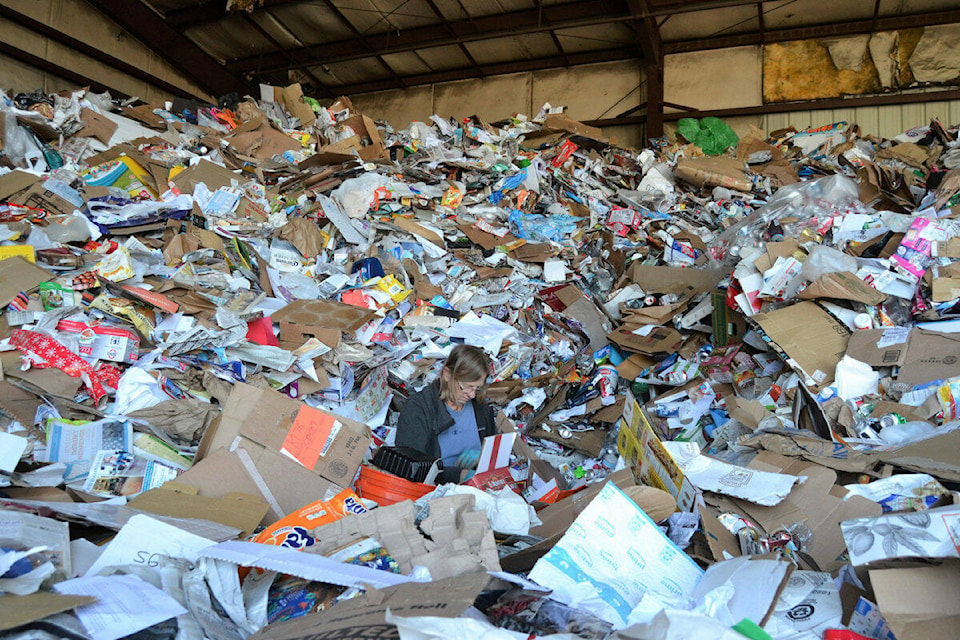With recycling contamination on the rise in Chilliwack’s curbside collection program, City of Chilliwack officials are working on solutions.
“Contamination” of the recycling stream occurs when non-recyclable items such as plastic bags, or styrofoam containers get tossed into the blue box.
“Contamination rates in the curbside mixed recycling are significantly higher than the provincial average,” according to the city staff report.
In October city officials said they were embarking on a contamination remediation plan, focused on education efforts.
The overall contamination rate is at 13.9 per cent, based on RecyclingBC audits of Chilliwack recycling, said director of engineering David Blain. The provincial average is somewhere between four and seven per cent.
To tackle the problem, city officials are partnering with Sydney Raison, a master’s student in natural resources and environmental studies at University of Northern B.C., on a research project featuring an online survey.
The survey answers from Chilliwack residents will help identify both the cause and the type of blue-box contamination in Chilliwack that’s been increasing in recent years.
The overarching goal is finding out more about how people “interact with the recycling program,” a better understanding of what is going in the recycling, and identifying ways that residents suggest could achieve a lower contamination rate. The Chilliwack-based recycling research will be contained in a public document upon completion.
They also created a computer game, Chilliwack Sorts, to help people understand more about waste diversion in a “fun way” by focusing on what items should be recycled, returned to depot, placed in the garbage, landfilled or composted.
City officials will not be involved in the analysis of survey responses, nor will they know who participated. Anyone who fills out the survey is entered in a draw to win a $50 Visa Gift card. Survey is open now online.
These items do not belong in the blue bin:
– Soft and stretchy plastic bags and overwrap
– Foam packaging like Styrofoam
– Other flexible plastic packaging such as chip bags and zipper lock bags
– Hazardous materials (e.g. sharp items, gas canisters, batteries, etc.)
– Personal hygiene products like face masks, paper towels and tissues
– Scrap metal such as pots/pans
– Small electronics like toasters and blenders
– Clothing
– Books
– Tupperware containers
– Rigid plastic products such as toys, car seats and chairs
– Glass bottles, dishes, window glass or ceramics
More info at chilliwack.com/recycling
RELATED: Recycling remediation plan launched in Chilliwack
Do you have something to add to this story, or a news tip? Email:
jfeinberg@theprogress.com
@CHWKjourno
Like us on Facebook and follow us on Twitter.
